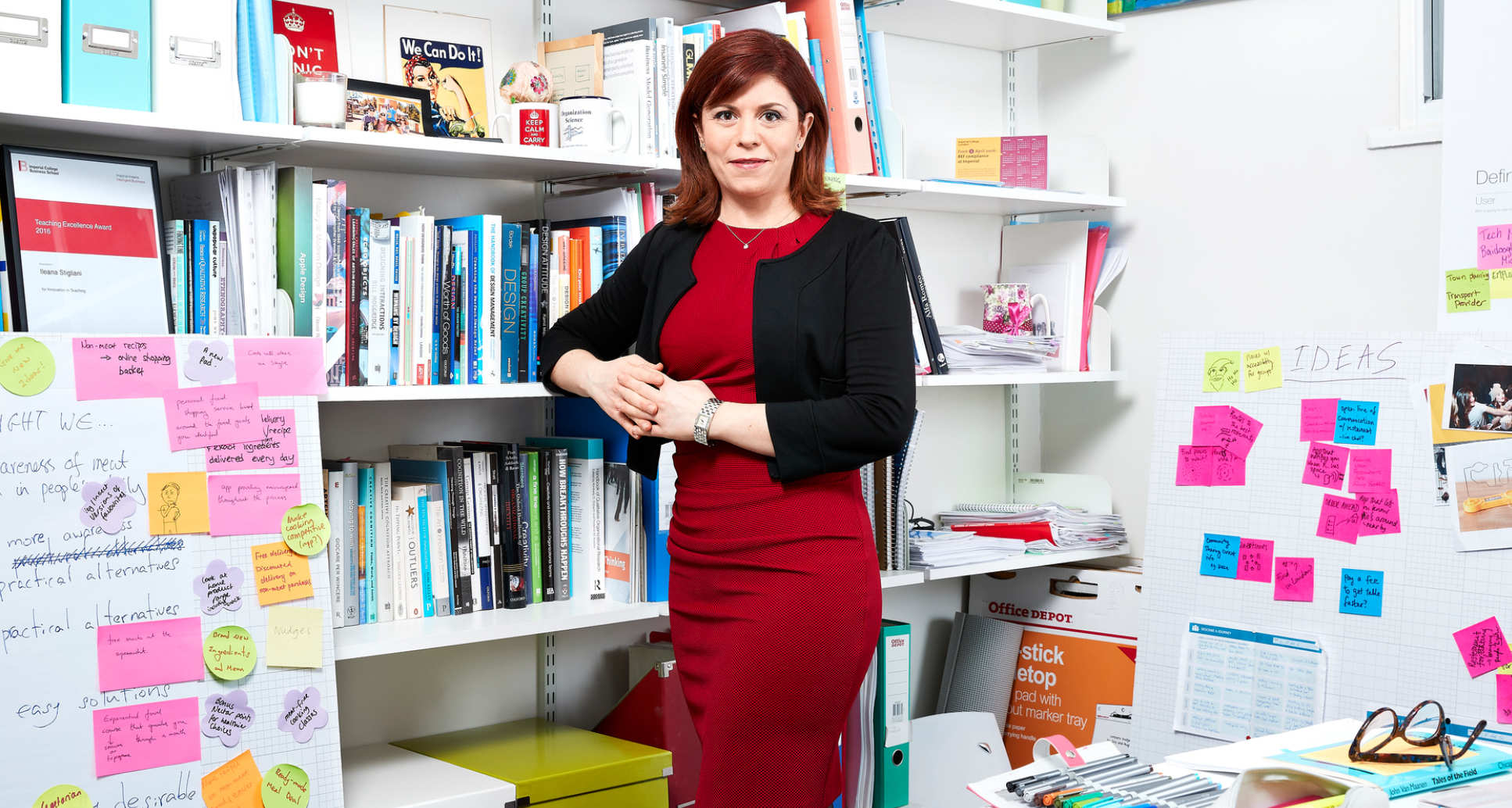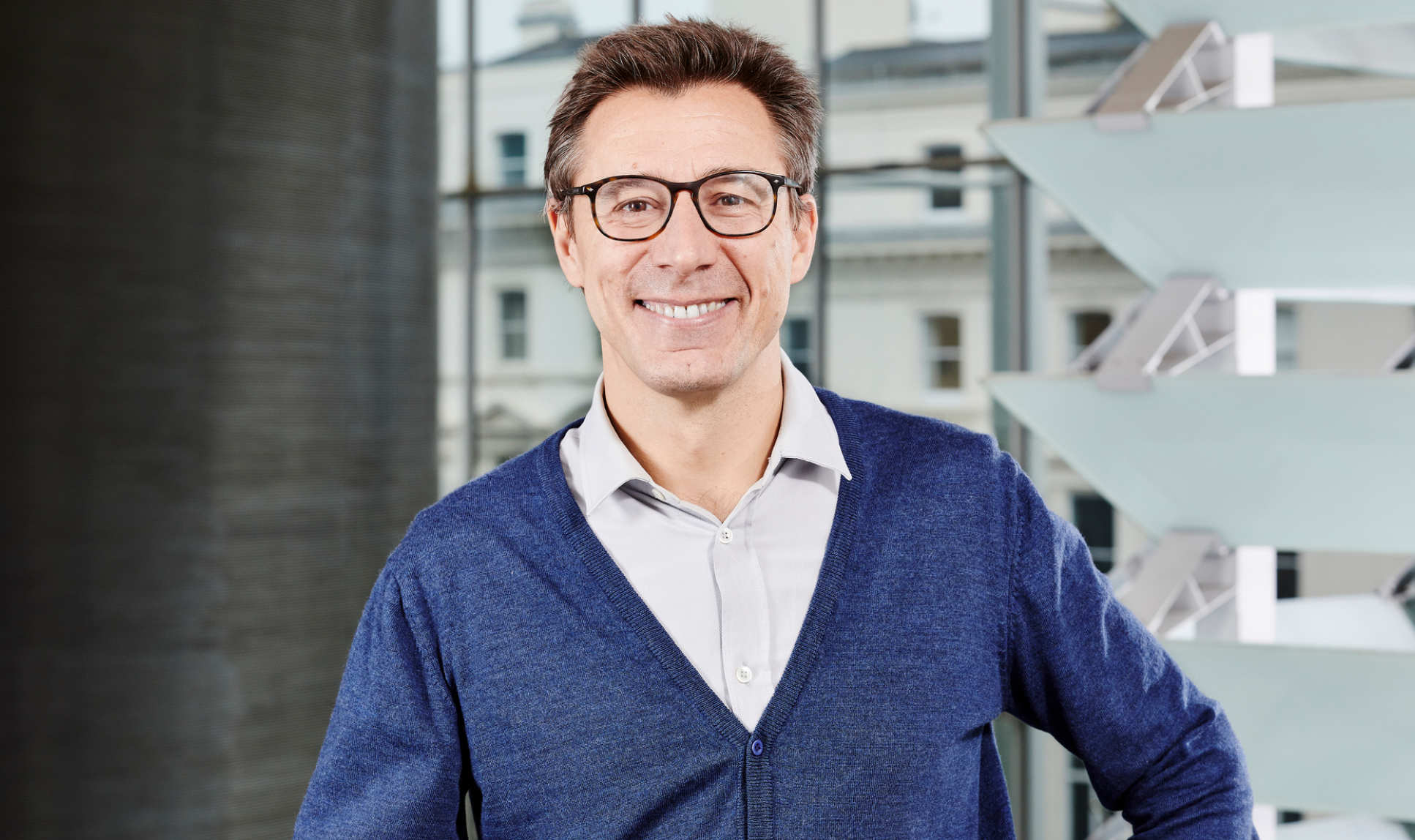Digital transformation
Digital technology changes everything
by Ian Mundell
When companies talk about digital transformation they do not always mean the same thing. Some are thinking of business as usual, only digital. Others envisage a more profound change, with digital technology opening up new horizons.
The two ideas are connected, according to Professor Christopher Tucci, a specialist in digital strategy and innovation who joins the Imperial College Business School this spring. The first phase is akin to automation, only replacing physical tasks with digital alternatives. "That helps, but really it just matches the efficiency everybody else can have. Sooner or later you will need something more."
This second phase involves thinking about new products or services made possible by digital technologies. "It means coming up with something that takes advantage of your digital infrastructure, and that is unique or difficult for other people to copy," he says. This will have major implications for the way the company operates. "Managing that change is also part of digital transformation. It's not something you just plug in."
Whether they are leading an internally inspired digital transformation or buying-in a solution, business leaders have to be well informed. "In many cases, they would need some kind of training to understand digital technologies and data science," says Professor Tucci. "They are not going to become programmers, but at least they will have a better conversation with internal and external providers and become better negotiators."

Centre for Digital Transformation
One of the projects Professor Tucci will lead at Imperial is the launch of a Centre for Digital Transformation, which will combine research, outreach and executive education. He is already developing an online course about digital transformation that will meet some of this need. "It will walk people through the different digital technologies, and then the change management aspects of adopting them," he says.
He also wants the Centre to be somewhere academics interested in the subject can get together. "I'm trying to help federate research at the Business School, and between the Business School and other departments, such Computing, Mathematics, and the Data Science Institute. There are a lot of people out there who want to work together on this, or simply exchange ideas."
In Mechanical Engineering, for example, people are studying the Internet of Things. "I'm interested in how that technology can be incorporated in a company’s’ business strategy," he says. "I'm also interested in the new business models that might follow the roll-out of 5G technology that is being investigated in telecoms and communication systems."
His own research interests range from business models that take advantage of artificial intelligence, to financial technology (commonly known as fintech), and crowdsourcing as a mechanism for problem-solving and innovation. "But there are a lot of other things going on. Digital advances are opening up enormous possibilities for companies these days, which we saw first-hand during the early stages of the global lockdown."
Deep learning for complex systems
The digital transformation in the work of Professor Michael Bronstein, in the Department of Computing, comes from applying geometric deep learning, a novel class of artificial intelligence methods, to systems in which complex interactions take place. Examples include networks of sensors communicating together, biological interaction networks, or the activity of online social networks.
The data from these systems is much more complex than that from sources usually analysed by deep learning, such images or acoustic signals. The first step is therefore to find a way to represent this data, so that the deep learning algorithms can get to grips with it.
Professor Bronstein and his colleagues have done this by treating individual elements in each system as nodes in a graph and their connections or interactions as lines between them, known as 'edges'. "The challenge then is that we need to replace the standard operations that are used in deep learning systems, particularly in convolutional neural networks, with analogous operations that work on graphs," he explains.
This approach has been developed in areas such as computer vision, computer graphics and 3D sensing, but it is coming into its own with social networks. The challenge is immense. "Social networks such as Facebook or Twitter have huge graphs, with hundreds of millions of users and multiple billions of edges that connect them."
But the variety of deep learning he is developing has fascinating potential applications, such as analysing the way misinformation spreads through social media. "There are empirical studies that show 'fake news', however you define it, spreads differently on social media than accurate information. That happens for a variety of reasons, which are still not clearly understood."
The important thing is being able to spot the pattern. "This is potentially a very powerful idea, because you don't need to look at the content itself. The way it spreads can provide some extra information that might help in identifying the type of content."
Professor Bronstein and his colleagues trained a deep learning system with stories labelled true or false by professional fact checkers. "We analysed how these stories spread on Twitter, and showed that spread time of a few hours could provide a very accurate indication of whether the story was true or fake," he says. “We found that historical user activity as well the structure of the spreading 'cascades' of the news were among features with highest predictive power.”
Encouraged by these results, Professor Bronstein, together with his students, launched a startup company, Fabula AI, which was acquired by Twitter last year.
Graphs are a very convenient mathematical abstraction for complex systems of relations and interactions. This means that deep learning on graphs can be used in broad range of problems. “We have successfully applied these methods to predict interactions of protein molecules, a key problem in drug development, and to analyse the interaction networks of food-based molecules with biomolecules in our body in order to identify 'hyperfoods' that might have effects similar to oncological drugs.”
Natural language processing
Professor Lucia Specia in the Department of Computing specialises in natural language processing, a cross-disciplinary field that brings together computer science, artificial intelligence, linguistics, and cognitive science. "The ultimate goal of natural language processing is to create systems that are able to understand language, act on it, perform a task, and then also produce language for certain applications," she explains.
Applications tend to divide between language understanding and language generation, although some do both. There is also a divide between text-based and voice-based systems. "Natural language processing has evolved a lot, especially in the last five years, mostly because of deep learning. It has proven effective for a number of applications, reaching quality levels that are very close to human performance."
Her own area of interest is machine translation, the technology behind applications such as Google Translate. In particular, she is looking a how text and images can be treated together by machine translation systems. "It's still like language translation, but it uses visual information as an additional source of context when the language is ambiguous, noisy or not clear enough in the text."
She and her colleagues are working on the fundamentals of such systems, introducing different perturbations into texts and asking whether or not an image or video can provide enough context to help the translation out. But their research has already been picked up and applied by business, in particular e-commerce platforms where fragmentary texts uploaded by users are often combined with images.
"Translating this kind of content is very challenging for standard machine translation technology, built using deep learning techniques," Professor Specia says. "They learn by seeing a lot of examples of text, but these tend to be complete and correct sentences. When you try to apply them to less standard language, which could be short titles, incomplete sentences or sentences with missing words or typos, then these systems struggle."
A simple example of how an image can help is the word "apple". If an image attached to the text shows an iPhone, then the system knows the text is about the brand rather than the fruit, and can translate accordingly.
The main application is translating product pages from one language into another, in order to reach a wider range of markets. But the same kind of approach could be used to help group together products from different sellers, using different languages. Here it might be useful, for example, to separate the kind of electronic keyboard used with a computer from the electronic keyboard that produces music.
It is also possible that text and image machine translation could help companies extend customer service across borders. "They may have emails from users from different parts of the world, in different languages, with pictures of products attached. This system could be applied to get a decent translation of all of this content, so that any downstream tasks can be handled in one particular language by tools that are already in place."
Putting people first
Digital transformation might be built on technologies such as these, but it should not be led by them, according to Dr Ileana Stigliani of the Business School's Department of Management and Entrepreneurship. Instead, she favours an approach known as design thinking.
"Regardless of the technology, what is important in this design-led approach to digital transformation is the mindset: taking a human-centred approach, identifying human needs, and thinking about how to best address them with solutions."
Sometimes the technology required can be relatively simple. This was the case when Bank of America started looking for a new financial product to draw in low-income customers and hired design consultancy IDEO to work on the problem.
Talking to low-income families that were good at saving, IDEO identified a habit of rounding up totals in the household cheque book. With each purchase or bill paid, a little money was left out of the total and in the bank, like dropping the change from a cash purchase into a jar. So in 2005 the bank launched a debit card that did the same thing, rounding up purchase totals and diverting the difference into a savings account. The product attracted two million customers, three-quarters of them new to the bank.
"This is an example of how observing what drives people's behaviour can lead to a very innovative solution," Dr Stigliani says. "You don't need a revolutionary technology in order to develop something that is really successful and really disruptive."
But data science and digital technologies do offer a wider range of possibilities for addressing the problems identified. A more recent example comes from Public Health England, which asked design studio Livework to help it find a more responsive way of delivering mental health services.
It found that people less likely to seek help for problems such as stress and anxiety were often up late at night, searching the internet for solutions to insomnia. From this came a data-driven solution, using browsing history and social media patterns to target mental health messages. These directed people to an online portal with advice, helpful apps, and routes to more formal support. Piloted in a small trial study, the approach is now being rolled out across England.
To take this design thinking further, the Business School has recently established the Imperial Business Design Studio, in collaboration with data-driven service design company Normally. "What we aim to do with the studio is create collective knowledge and gather empirical evidence about how companies can create value through the use of design," she explains. This will bring rigor to a subject often characterised by anecdotes and superficial case studies.
While focused on research, the goal is to involve businesses as much as possible. "We want to disseminate knowledge in a way that can be useful for companies, for example by delivering bespoke training, up-skilling employees and helping them build new capabilities so that they can embark on the systemic change necessary to drive successful design-lead digital transformation."

Innovation under regulation
Meanwhile the regulatory environment for digital transformation is evolving, with controls increasingly likely on tech giants such as Google and Facebook. This is happening because past attempts to resolve competition cases retrospectively proved too slow.
"The Google Shopping case alone took seven years to conclude, and by the time a decision was made by the European Commission most of the competitors had gone out of business," says Professor Tommaso Valletti, head of the Business School's Department of Economics and Public Policy. As well as researching regulation, Professor Valletti has first hand experience, having spent three years as Chief Competition Economist at the European Commission.
"It's now clear that in highly dynamic industries, where there is already a super-incumbent platform, you need to have some sort of ex ante [before the event] regulation," he goes on. "There is now a convergence of views that this is necessary, and so it's important that people start taking practical steps."
For example, Facebook currently has a dominant position in social media, and users are reluctant to move from that environment because it means leaving all their connections, contacts and posts behind. A regulation on interoperability or data portability could change that, giving companies with new digital products or services more room to develop.
"If regulation allowed you to have the portability of contacts, as we do with mobile phone numbers, then that could spur innovation even more," he says. This is technically feasible, with the caveat that privacy is preserved. "We want to make sure that portability and interoperability do not result in data leakages of the wrong sort."
Regulation of the tech giants could also broaden the horizons of digital startups, which tend to see acquisition by Facebook or Google as the only outcome worth having. "If you are swallowed by Google, you may become massively rich, but your company then exists only within the Google ecosystem," Professor Valletti says. "If regulation pushes towards an open internet, then you can survive without being swallowed by Google or Facebook. The ambitions of entrepreneurs would change dramatically in terms of the innovations they could pursue. Society would benefit."
Professor Valletti's current research focuses the impact these dominant platforms have on society and the economy, in particular through their role as attention brokers. "Rather than a search engine and a social network, I see Google and Facebook as platforms that grab our attention, then keep us online as long as they can in order to collect information about us and monetise that through advertising. They have created an attention bottleneck that has serious economic and political consequences."
This role needs to be balanced against the positive effect the platforms have on the economy, for instance stimulating trade. "Now you can be in Nicaragua and sell something in Alaska, so they are matchmakers where markets wouldn't otherwise exist," he explains. "But with the concentration of market power, they have also become rent extraction devices, for example regarding small companies that have no alternative when it comes to advertising. That can be very damaging for society."

Managing digital transformation
Whether it is the cloud, big data or artificial intelligence, the kind of technology involved in digital transformation is often just a detail. "What's really challenging for company leaders is the changing nature of work, what that means for people's roles, what kind of people you have on the teams, and how the teams are going to be organised," says Professor Nelson Phillips, of the Business School's Department of Management and Entrepreneurship.
This means that company leaders need to develop new competencies if any digital transformation is to be successful. First, they need some knowledge of digital technologies. Then they need organisational competencies, such as how to build teams and manage them in the context of these new technologies.
"Thirdly, there are new ethical problems that will challenge company leaders. They need to have the tools to recognise when they encounter one of these ethical problems, and then know how think about them and make decisions that reflect these ethical dimensions."
One example would be a big financial services company that is using artificial intelligence to make decisions about mortgages. "You need to be prepared to understand and defend the decisions that your AI system is making, and ensure that the AI system hasn't picked up biases from decisions that you used to train it."
Acquiring these competencies is now baked into the programmes offered by the Imperial College Business School. "If you take our Masters in Finance you spend a lot of time with data analytics and artificial intelligence, because that is what's happening in business and you really need to understand it. But if you are on a general management programme, then it's about having enough knowledge to interact specialists and manage organisations where these are an important part of the activity."
The expertise to teach these subjects has been developed within the school, but also benefits from links across Imperial. "We have a lot of people in the Business School who study the business of technology and can teach the general management topics, but when it comes to topics like artificial intelligence and data analytics we can bring in specialists in computing or mathematics. They are an incredible resource for us."
Summing up, to manage a digital transformation successfully, you need an understanding of the technologies involved, the organisational challenges of deploying them, the regulatory environment, and the human dimension. "Imperial has experts in all these fields, who come together in a world-leading collaborative environment."
Ian Mundell is a journalist who specialises in research and higher education. He divides his time between London and Brussels.
This feature was commissioned by the Imperial Business Partners programme, which enables a unique approach to problem solving for research-driven industries by providing accelerated access to Imperial expertise, talent and facilities. Members benefit from a range of specialist services, and enjoy a programme that combines academic excellence with entrepreneurial innovation to generate powerful debates and inspirational discussions.


